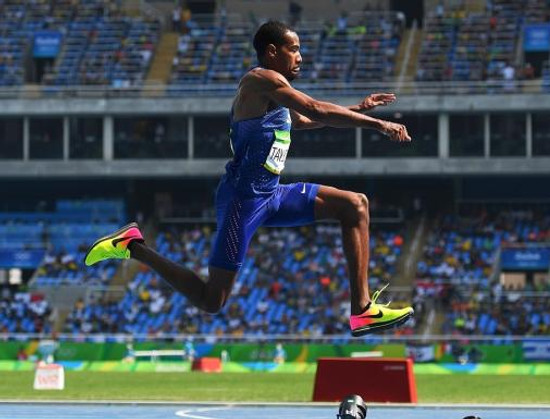

Field Events
Competitors in the high jump attempt to clear a crossbar. The contestant may make the takeoff for the high jump using only one foot, not two. The athlete approaches the bar almost straight on, then twists his or her body so that the back is facing the bar before landing in the pit. These landing areas, which at one time were recesses filled with sawdust, are now well-padded foam-rubber mats.
In the pole vault, as in the high jump, the object is for the athlete to pass over a bar without knocking it off, in this case with the aid of a pole. In the vault, too, a foam-rubber pit is employed to break the athlete's fall. The athlete then plants the pole in a sunken box, which is positioned immediately in front of the pit, and rides the pole during the catapulting phase, before twisting the body facedown to the bar and arcing over while releasing the pole.
In the long jump, or broad jump, as it was once called, the contestants run at full speed down a cinder or synthetic runway to a takeoff board. This board marks the point where the athlete must leave the ground. He or she may step on the board but must not allow any portion of the foot to go over it; otherwise, he or she is charged with a foul, and the jump is invalidated. After a legal jump the contestant's mark is measured from the front edge of the takeoff board to the nearest point of contact in the sand-filled pit.
The triple jump requires its contestants to hop, step, and jump into the pit. When the athlete reaches the board, he or she takes off and lands on the same foot; then, while attempting to maintain momentum, the athlete takes an exaggerated step, landing on the opposite foot, and then continues into the pit with a third jump, landing with both feet.
////////////////////////////////////////////////////////////////////////////////////
////////////////////////////////////////////////////////////////////////////////////

High Jump
